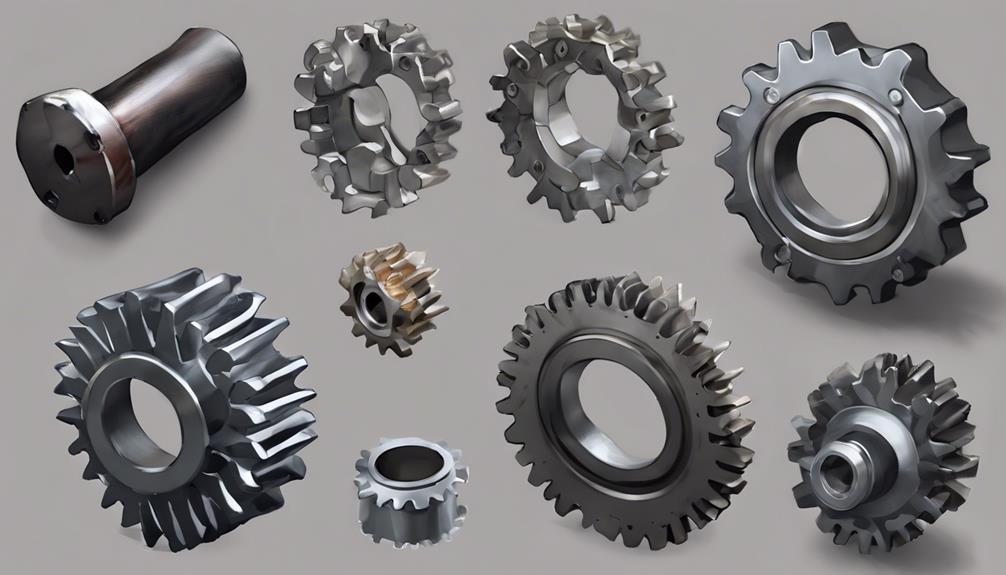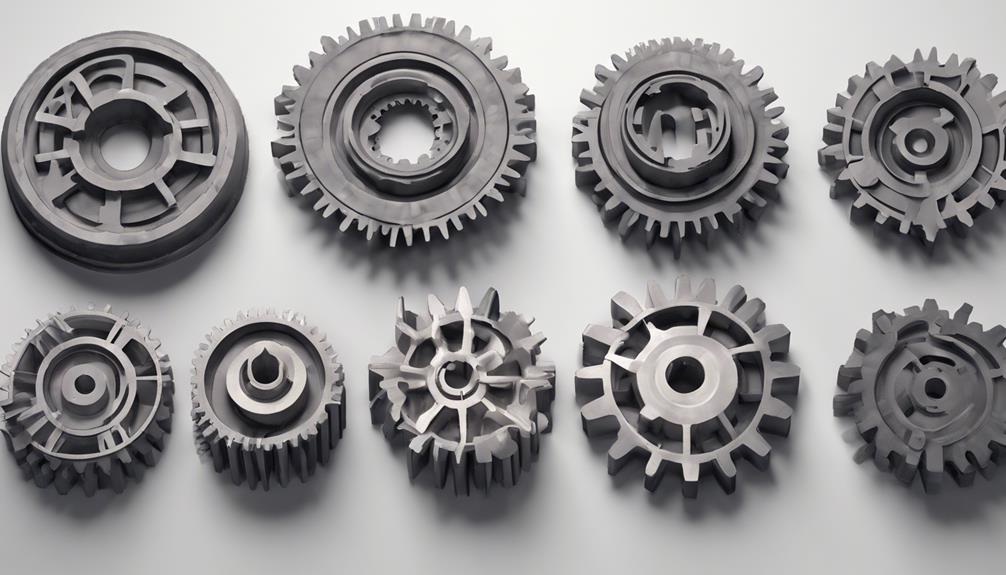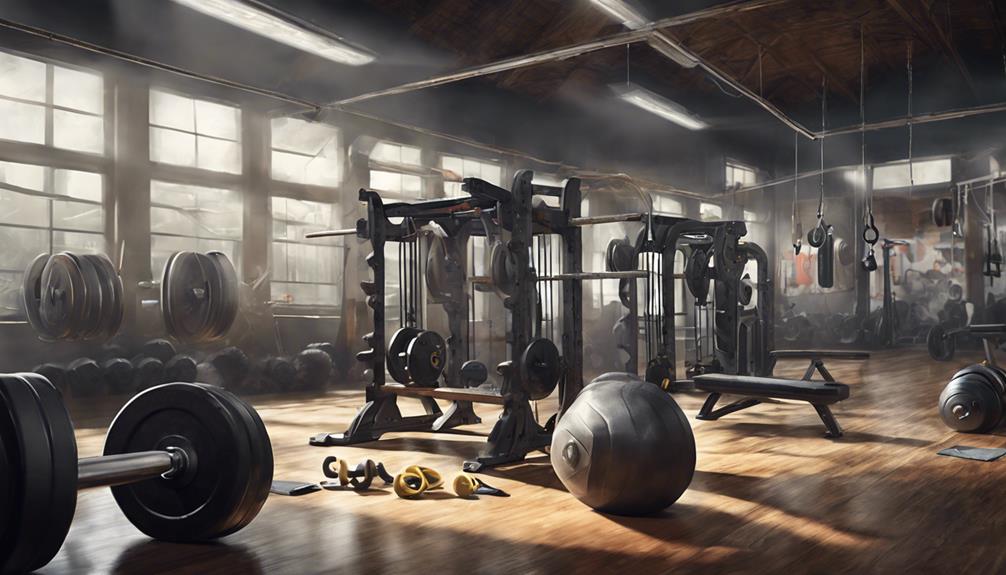With a constant pursuit of optimizing gear performance, uncovering the top secrets to enhance strength can revolutionize mechanical applications. The intricate balance between material selection, lubrication techniques, and printing strategies holds the key to revealing unparalleled durability and reliability in 3D printed gears. By delving into the nuances of each element, a deeper understanding emerges of how to elevate gear strength to unprecedented levels. Stay tuned to explore the transformative insights that could reshape the landscape of gear technology as we understand it.
Material Selection for Gear Strength

When considering the strength of gears, selecting the suitable material plays a significant role in ensuring excellent performance and longevity. Nylon stands out as a top choice due to its exceptional strength and durability, making it ideal for gear applications where robustness is paramount.
Derived from renewable sources, Nylon boasts a high melting temperature and low friction coefficient, enhancing its wear resistance and overall performance.
On the other hand, PETG offers excellent low-temperature performance and is a cost-effective alternative to ABS. While ABS provides superior impact strength, it requires specific printing conditions and emits toxic fumes.
PLA, offering a balance between strength and cost, is a popular choice for gears not exposed to high temperatures. Each material has its unique properties, catering to different gear strength requirements.
Lubrication Techniques for Gear Maintenance
Exploring effective lubrication techniques is essential for ensuring peak gear maintenance and longevity in 3D printed gear applications. Proper lubrication reduces friction and wear, extending the lifespan of gears.
When selecting a lubricant, it is vital to choose one that complements the specific plastic type of the gear. Petroleum-based lubricants are suitable for Nylon and ABS gears, while plant-based lubricants work better with PLA and PETG gears.
Regular maintenance, including reapplication of lubricants when necessary, is key to keeping gears running smoothly.
Strategies for Printing Stronger Gears

To enhance the strength and durability of 3D printed gears, implementing strategic printing techniques is crucial for achieving peak performance in gear applications. When aiming for stronger gears, guarantee proper filament heating, increase infill overlap for improved strength, disable or reduce cooling to boost layer adhesion, and select an ideal layer height for better adhesion.
These strategies can greatly impact the overall strength of the printed gears, making them more reliable and durable for their intended applications. By carefully considering these factors during the printing process, users can create gears that meet the necessary performance requirements, ensuring top functionality and longevity in various mechanical systems.
Understanding Infill Impact on Gear Strength
Understanding how infill density influences the strength of 3D printed gears is essential for optimizing their performance in mechanical applications. Infill density refers to the internal structure of a 3D printed object, impacting its strength and durability.
When it comes to gears, the infill percentage can greatly affect their mechanical properties. Contrary to common belief, gears with 50% infill can exhibit comparable strength to those with 100% infill, while using less material and reducing printing time.
Factors such as infill pattern, material type, and print settings also play important roles in determining gear strength. By carefully selecting the appropriate infill density based on the specific application requirements, one can achieve a balance between strength, weight, and printing efficiency in 3D printed gears.
Expert Recommendations for Gear Strength

When seeking guidance on enhancing gear strength in 3D printing, industry experts emphasize the significance of selecting best-suited printing parameters and materials. Ensuring proper filament heating, increasing infill overlap, and optimizing layer height are essential for achieving stronger gears. Additionally, lubrication with the appropriate lubricant based on the plastic type can help reduce friction and wear, enhancing gear performance and longevity. Below is a table highlighting key recommendations for enhancing gear strength:
| Recommendation | Action |
|---|---|
| Important Filament Heating | Ensure filament is adequately heated |
| Infill Overlap Increase | Increase infill overlap for better strength |
| Best Layer Height | Opt for optimum layer height for better adhesion |
Frequently Asked Questions
Can I Use the Same Lubricant for All Types of 3D Printing Materials?
When addressing lubrication for 3D printing materials, it is essential to match the lubricant type with the specific plastic material being used. Petroleum-based lubricants suit Nylon and ABS, while plant-based options are more compatible with PLA and PETG.
What Is the Ideal Infill Percentage for Optimal Gear Strength?
For ideal gear strength, consider an infill percentage of 50% as it can provide comparable strength to 100% infill. Materials like PETG, Nylon, and PLA are suitable choices, with proper consideration of temperature ranges for each.
How Can I Prevent Warping in 3D Printed Gears?
To prevent warping in 3D printed gears, focus on optimizing bed adhesion by leveling accurately and using adhesion aids like tapes or glues. Adjust print settings to minimize temperature fluctuations, consider a heated enclosure, and guarantee proper cooling post-printing.
Are There Any Specific Post-Processing Steps for Enhancing Gear Durability?
For enhancing gear durability, post-processing steps like annealing, adding reinforcing fibers, or applying coatings can be beneficial. Annealing can strengthen printed gears, while additives like carbon fibers or epoxy coatings can improve wear resistance.
Can I Mix Different Filament Types for Stronger Gear Construction?
Mixing different filament types for stronger gear construction is not recommended due to varying material properties. It can lead to inconsistencies in strength, durability, and performance. It's best to stick with a single material known for gear applications.
Conclusion
In summary, mastering the secrets to enhancing gear strength through careful material selection, lubrication techniques, printing strategies, and understanding the impact of infill density is essential for achieving peak performance in various mechanical applications.
By following expert recommendations and implementing these key factors, one can unleash the full potential of 3D printed gears and guarantee their durability and reliability.
These secrets serve as the foundation for achieving excellence in gear design and functionality.